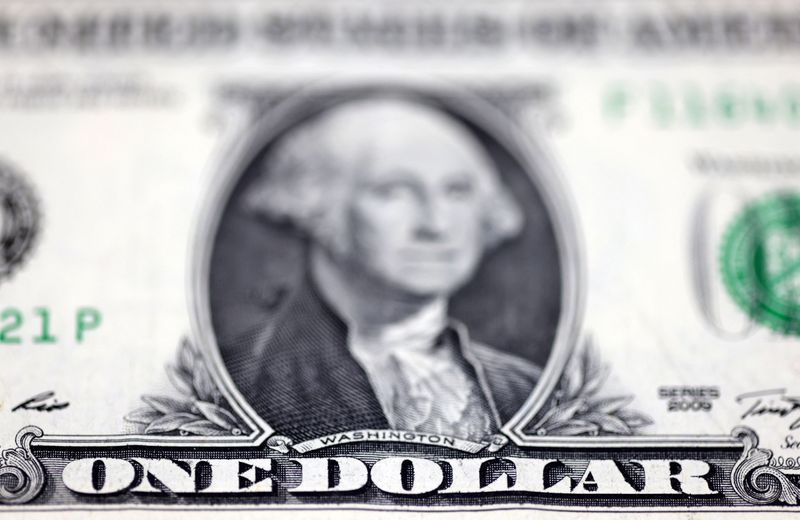By Ankur Banerjee
SINGAPORE (Reuters) -The U.S. dollar was nursing steep losses on Tuesday, with the yen on the back foot after a sharp rise in the previous session as traders contend with the unwinding of popular carry trades and the prospect of deep rate cuts from the Federal Reserve.
The yen was 0.89% weaker on Tuesday at 145.48 per dollar, after rising for five straight sessions and touching a seven-month high of 141.675 on Monday. The yen was also lower against the Australian dollar, euro and sterling.
Last week’s softer-than-expected U.S. job data, along with disappointing earnings from major tech firms and heightened concerns over the Chinese economy, have sparked a global sell-off in stocks and high-yielding currencies.
On Monday, the global rush out of riskier assets took a staggering turn as worries that the U.S. is heading for a recession roiled investors.
U.S. central bank policymakers pushed back on Monday against the notion that weaker-than-expected July job data means the economy is in recessionary freefall, but also warned that the Federal Reserve will need to cut rates to avoid such an outcome.
“Sell-offs that manifest themselves through wild swings in the currency markets are sharp and swift, but usually very short lived,” said Jamie Cox, managing partner at Harris Financial Group.
“Markets are clearly nervous about the divergent paths central banks are taking, leading to lots of volatility.”
Traders are now anticipating 110 basis points (bps) of easing this year from the Fed, with a 50 bps cut in September priced in at a 75% chance, CME FedWatch tool showed. Traders had fully priced in a 50 bps cut on Monday.
“We maintain a degree of calm as we do not anticipate any overreaction by central bankers,” said Christian Scherrmann, U.S. economist at DWS.
Scherrmann said Fed Chair Jerome Powell is likely to provide definitive guidance at this year’s Jackson Hole Economic Symposium in August.
RISING YEN
The surge in the yen also comes in the wake of the Bank of Japan hiking interest rates last week in a hawkish pivot and a sharp unwinding of carry trades as investors rush to get out of the way of the soaring currency.
In a carry trade, investors borrow money from economies with low interest rates such as Japan or Switzerland, to fund investments in higher-yielding assets elsewhere.
CFTC data last week showed speculators’ bearish bets against the yen have been slashed to $6 billion from April’s near-decade high of $14.5 billion.
The yen’s fortunes have shifted since Tokyo spent $36.8 billion last month in bouts of interventions, lifting the yen away from the 38-year lows of 161.96 per dollar it was rooted to barely a month ago.
Idanna Appio, portfolio manager at First Eagle Investments, still sees the yen as undervalued and expects it to appreciate over the medium term.
“However, near-term movements are challenging to predict and seem likely to be more sensitive to U.S. developments.”
The , which measures the U.S. unit versus six rivals, was last at 102.87 after touching a seven-month low of 102.15 on Monday.
The Australian dollar was 0.44% higher at $0.6525 after comments from Reserve Bank of Australia Governor Michele Bullock suggested rate cuts were still further away.
A rate cut was not on the agenda in the near term, Bullock said, adding that the central bank was ready to raise rates if needed.
Australia’s central bank held interest rates steady on Tuesday as expected, while reiterating that it was not ruling anything in or out to control inflation.

The sank to over an eight-month low of $0.63485 on Monday, with its year-to-date losses at over 4% this year as risk sentiment sours.
The euro was steady at $1.09535, below the seven month high of $1.1009 it touched on Monday. The sterling last fetched $1.27765.
















